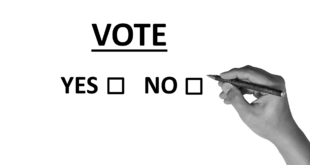Can You Meet the Challenge?
Each issue, AFSA’s Engineering & Technical Services Department staff present technical challenges. Besides testing yourself and your co-workers, these exercises are excellent preparation for professional certification tests and also may count as continuing education hours. Check with your certification organization. Each issue of Sprinkler Age will focus on one set of challenge questions related to the technical theme of that issue. To participate, carefully read through and work the problems. Then check your answers. Test your knowledge and that of your co-workers today!
May/June Questions and Answers
The following questions are based on NFPA 13, 2022 edition; NFPA 14, Standard for the Installation of Standpipe and Hose Systems, 2019 edition; NFPA 20, Standard for the Installation of Stationary Pumps for Fire Protection, 2022 edition; and NFPA 25, 2020 edition.
1. Which of the following is defined as a vessel that can store air under pressure that is higher than the air pressure in a system?
A. Air chamber
B. Air receiver
C. Air maintenance device
D. Air reservoir
The correct answer is B.
3.3.2 Air Receiver. A chamber, compatible with an air compressor, that can store air under pressure that is higher in pressure than that in the dry pipe or preaction system piping. (AUT-SSI)
2. For a diesel engine driver in a fire pump system, how many seconds must the air supply be sized to provide continuous cranking without recharging?
A. 60 seconds
B. 90 seconds
C. 120 seconds
D. 180 seconds
3. What is the maximum water delivery time to the most remote hose connection for an automatic dry standpipe with a capacity of 1,000 gallons?
A. 1 minute
B. 1 minute, 30 seconds
C. 2 minutes
D. 3 minutes
The correct answer is D.
5.2.1.2.2 Piping volume shall be permitted to exceed the requirements of 5.2.1.2.1 where the system design is such that water is delivered to the system at the most remote hose connection in not more than 3 minutes, starting at the normal air pressure on the system and at the time of fully opened hose connection.
4. Dry sprinkler systems are required to be equipped with what device that activates 5 psi above the system air pressure?
A. Low-pressure switch
B. High-pressure switch
C. Pressure relief valve
D. Automatic air vent
The correct answer is B.
8.2.6.7.2.2 The high pressure signal shall be set at 5 psi (0.3 bar) above the system air pressure specified in 8.2.6.7.1.
5. When performing a periodic air leakage test on a preaction system, if the normal system pressure is locked in with the air source shut off, how long does the system have to maintain pressure before the low air alarm initiates?
A. 1 hour
B. 2 hours
C. 4 hours
D. 24 hours
The correct answer is C.
13.4.3.2.6 Preaction systems shall be tested once every 3 years for air leakage, using one of the following test methods:
- Perform a pressure test at 40 psi (3.2 bar) for 2 hours. The system shall be permitted to lose up to 3 psi (0.2 bar) during the duration of the test. Air leaks shall be addressed if the system loses more than 3 psi (0.2 bar) during this test.
- With the system at normal system pressure, shut off the air source (compressor or shop air) for 4 hours. If the low air pressure alarm goes off within this period, the air leaks shall be addressed.
 Sprinkler Age A Publication of the American Fire Sprinkler Association
Sprinkler Age A Publication of the American Fire Sprinkler Association

